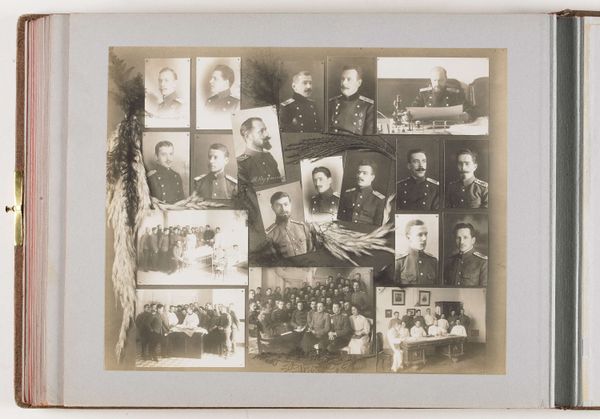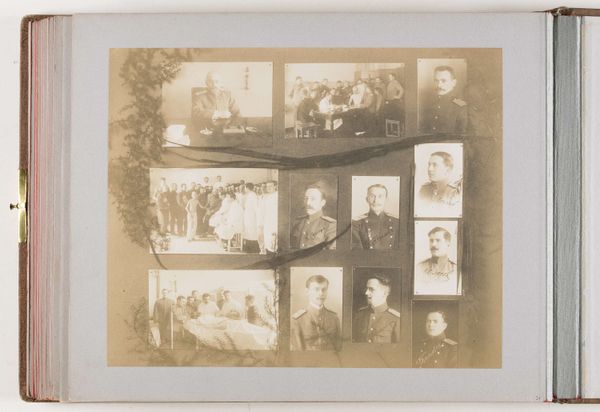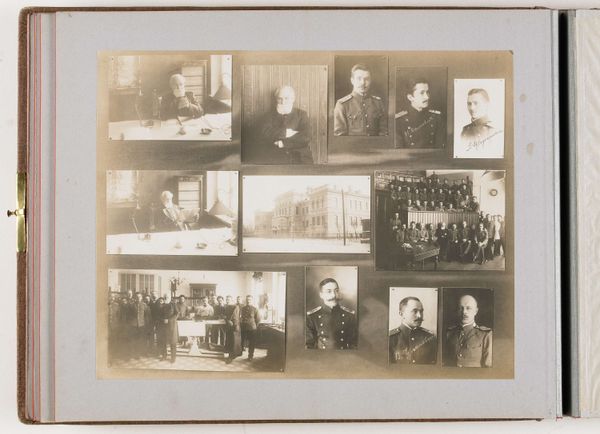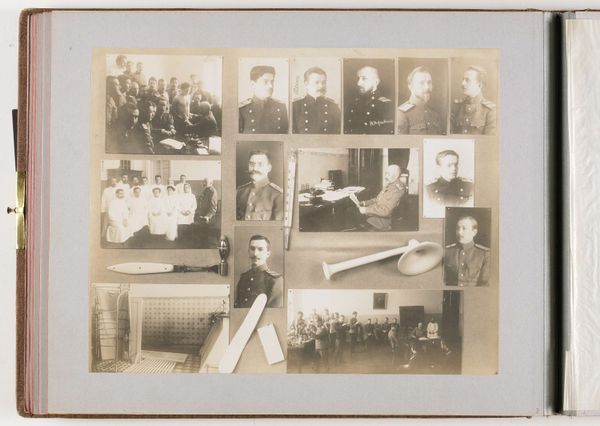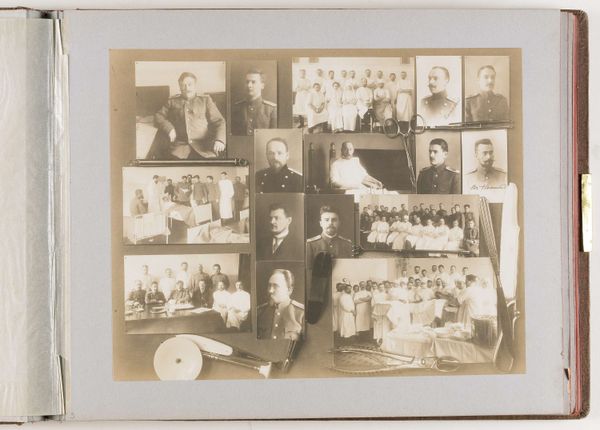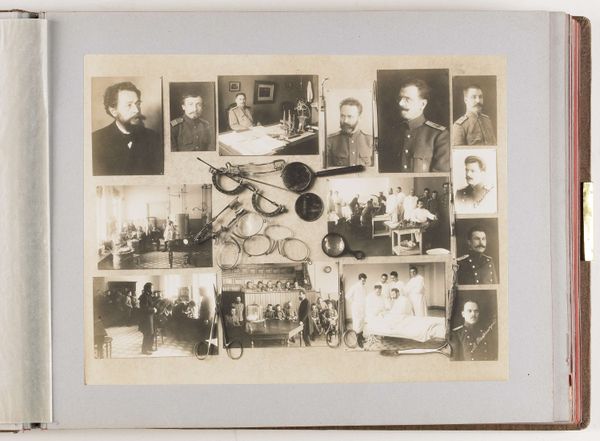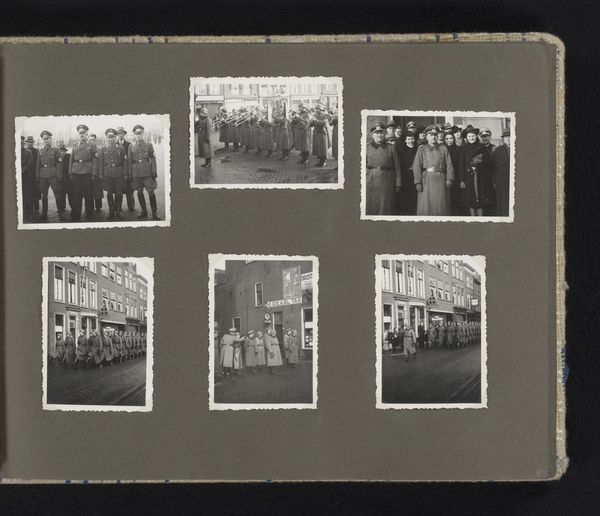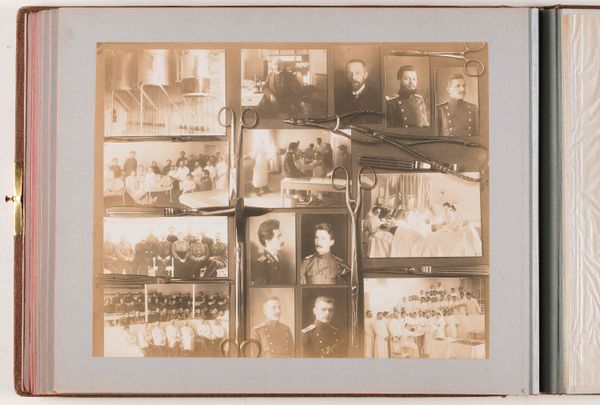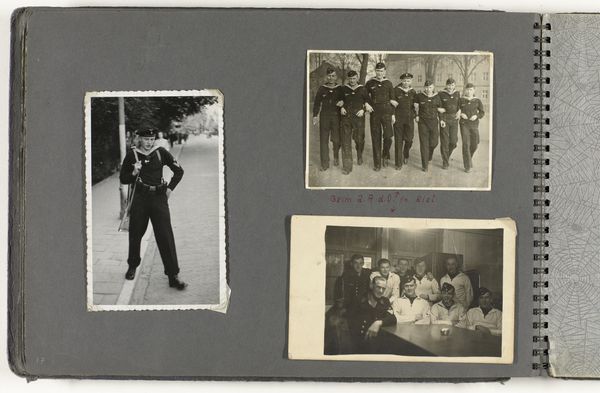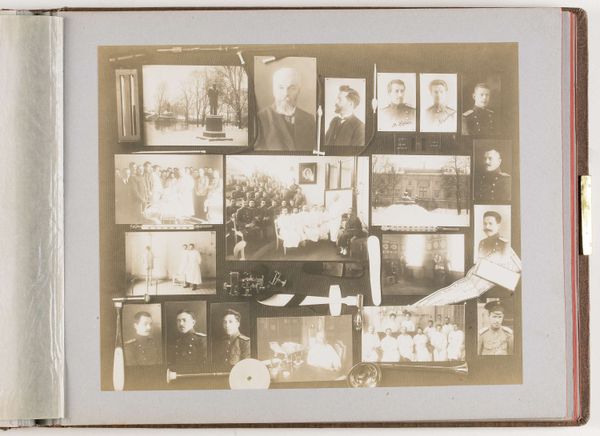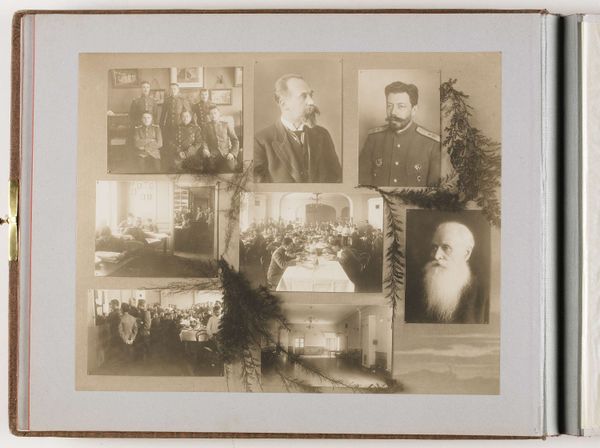
Compositie van vijftien portretten van onbekende studenten van de Keizerlijke Militair-Medische Academie 1913
0:00
0:00
print, photography, collotype, photomontage, albumen-print
#
portrait
# print
#
photography
#
collotype
#
photomontage
#
group-portraits
#
russian-avant-garde
#
modernism
#
albumen-print
Dimensions: height 232 mm, width 287 mm
Copyright: Rijks Museum: Open Domain
Editor: Here we have V. Sabel'skij’s "Compositie van vijftien portretten van onbekende studenten van de Keizerlijke Militair-Medische Academie," made around 1913. It’s an albumen print photomontage showing formal portraits interspersed with images of groups of uniformed students. It's a fascinating window into a particular time, but what does it tell us about that time, about Russian society on the eve of such huge upheavals? Curator: Well, immediately, the format itself speaks volumes. An albumen print photomontage signals both an adherence to established portraiture traditions and a nod toward modernist experimentation with form, suggesting a society in transition. Consider the power dynamics inherently captured. We see rows of anonymous faces. How were military and medical training interwoven within Imperial Russian societal structures, and how is that visually represented here? Editor: So, it’s not just a group photo, it’s a reflection of institutions? Curator: Exactly. And a projection of Imperial power. The military-medical academy aimed to produce not just doctors but loyal servants of the Tsar. This piece presents a visual codification of hierarchy, control, and perhaps even anxieties about the future of the empire in 1913. Doesn't the somewhat stiff arrangement of portraits imply this? Also, who commissioned the artwork and for what purposes might influence the image we get from this group of students. Editor: I never thought about it like that. So even something as seemingly simple as a collection of photographs can be read as a document about power. Curator: Precisely. It also suggests the institution's self-perception, projecting authority through a calculated display. Looking at this today reminds us of the role of art in shaping and reinforcing societal structures and ideas. Editor: That makes me rethink how I approach historical photographs; seeing beyond the surface image and considering their social implications. Thanks!
Comments
No comments
Be the first to comment and join the conversation on the ultimate creative platform.
